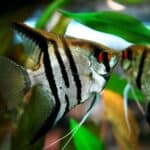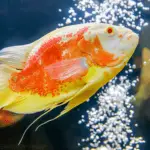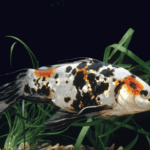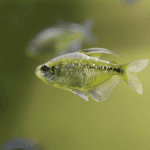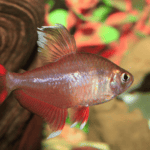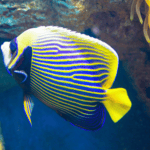Introduction
The Yoyo Loach is a very handsome freshwater aquarium fish, also known as Almorha loach, Pakistani loach, and Reticulated loach. It is found in India, Bangladesh, and Pakistan and inhabits still and slow-running waters with rocky substrates. Adults prefer calm water pools of highland streams, while juveniles are usually found in lowland waters. The Yoyo Loach prefers slightly acidic water with pH of 6.5-7.5, hardness of 3 – 10 dGH, and a temperature of 75-82°F.
Physical Appearance
The Yoyo Loach has an elongated and laterally compressed body with a forked caudal fin. Its body is gray or silver in color with many vertical and oblique dark stripes scattered along the back and sides. Dark oval spots or blotches can also be seen between the bands. The fins are translucent and are marked with the same stripes found on the body. The dorsal or backside is convex in shape, while the belly area is fairly straight. The mouth is surrounded by four pairs of barbells.
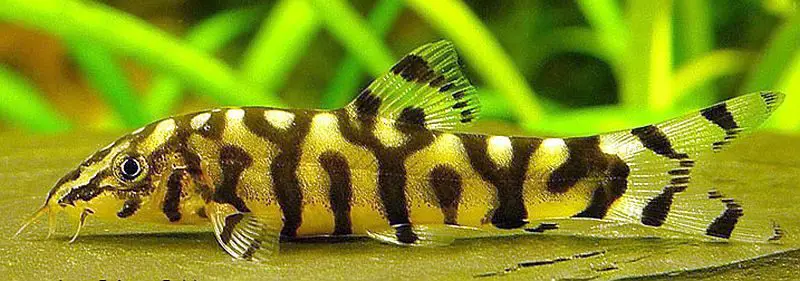
Diet and Feeding
The Yoyo Loach is omnivorous. In nature, its diet comprises aquatic mollusks, insects, worms, and other invertebrates. In captivity, they accept flake food, freeze-dried food, and both live and frozen food such as bloodworms, Tubifex, Artemia, mosquito larvae, Daphnia, Mysis shrimp, and chopped cocktail shrimp. They also enjoy fresh fruits and vegetables such as cucumber, melon, blanched spinach, or courgette. They can grow up to 15.49 cm in length and live for 20 years or more.
Aquarium Care and Tank Mates
Yoyo Loaches are peaceful fish that do best in medium to large planted aquariums with a sandy substrate. The tank should have ample hiding places, such as rocks, caves, and roots, and the water should be soft, slightly acidic, and well-oxygenated. Nitrates should be kept below 10ppm, and regular weekly partial water changes should be done. Yoyo Loaches should be kept in groups of 6 or more and can be housed with peaceful, open water-dwelling cyprinids such as barbs, rasboras, danios, gouramis, redtail or rainbow sharks, rainbows, and other loach species. Avoid long-finned upper fish to prevent fin nipping and ensure a secure tank cover, as they are great jumpers.
Health and Disease Prevention
Yoyo Loaches, like any other fish, can be susceptible to various diseases. It’s essential to monitor their health and take preventive measures to maintain a healthy aquarium environment.
Ichthyophthirius multifiliis (Ich) is a common parasitic disease that causes white spots on the fish’s body. Quarantining new fish and raising the tank temperature to 86°F for a few days can help prevent Ich. If infected, medications containing malachite green or formalin can be used to treat the fish.
Another common issue is bacterial infections, which can cause fin rot, red streaks, or ulcers on the fish’s body. Ensuring good water quality, providing a balanced diet, and quarantining sick fish can prevent bacterial infections. Antibiotics like tetracycline or kanamycin can be used for treatment if needed.
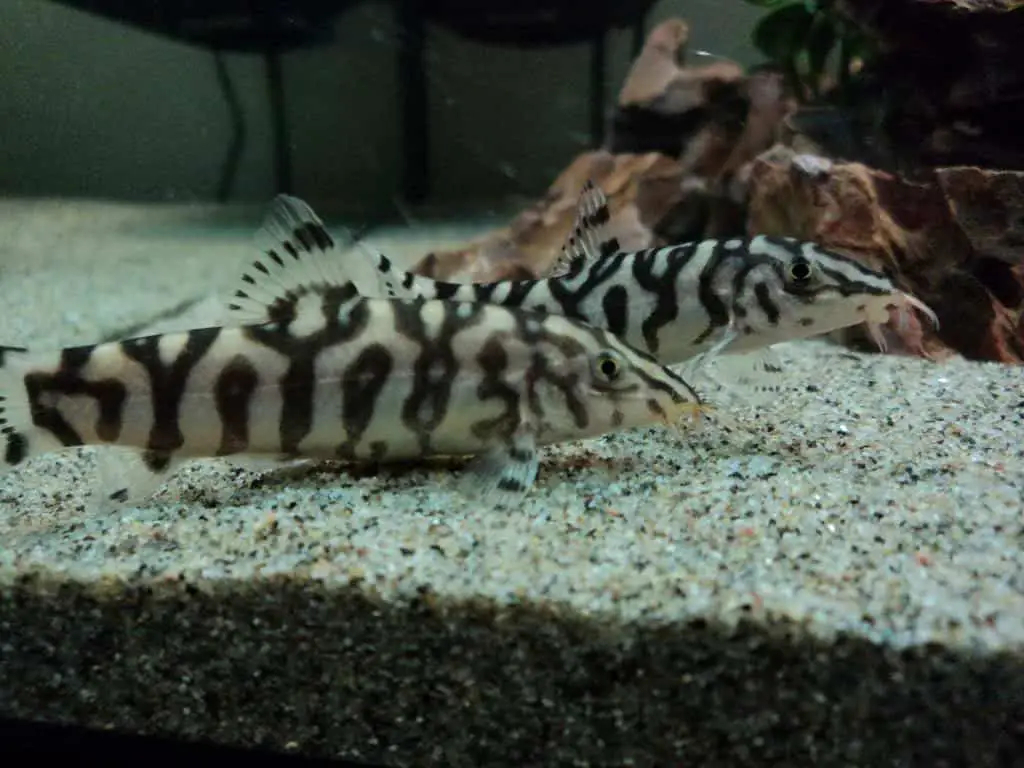
Tank Setup and Decoration
A well-designed Yoyo Loach tank should meet the fish’s specific requirements while providing an attractive and stimulating environment.
Substrate: Choose a soft, sandy substrate to prevent injury to the fish’s delicate barbels while burrowing. Fine-grain sand or smooth gravel is ideal.
Filtration: Yoyo Loaches thrive in well-oxygenated water, so a high-quality filter that promotes water movement is essential. An external canister filter is a good option.
Lighting: These fish prefer subdued lighting. Using floating plants or dimmable LED lights can help achieve the desired effect.
Decoration and Aquascaping: Yoyo Loaches love hiding spots, so provide plenty of caves, rocks, driftwood, and roots. Use live plants such as Cryptocoryne, Anubias, and Java Fern to create a natural environment and help control nitrates.
Social Interaction and Behavior
Yoyo Loaches are social and peaceful fish that enjoy the company of their own species and other non-aggressive tank mates. Keeping them in groups of 6 or more helps them feel secure and promotes natural shoaling behavior. They may become shy or stressed if kept singly or in small groups.
These bottom-dwelling fish are generally non-territorial but may exhibit occasional sparring behavior, especially during feeding or breeding. They may also engage in playful chasing with other tank mates.
Growth and Development
Yoyo Loaches grow steadily throughout their lives, reaching their full adult size of about 15.49 cm within a couple of years. Juvenile Yoyo Loaches are usually silver or gray with dark stripes, and their coloration may change slightly as they mature, becoming more vibrant and defined.
As they grow, Yoyo Loaches may develop a preference for specific hiding spots or territories within the aquarium. Their behavior may also change, with adults becoming more cautious and deliberate in their movements.
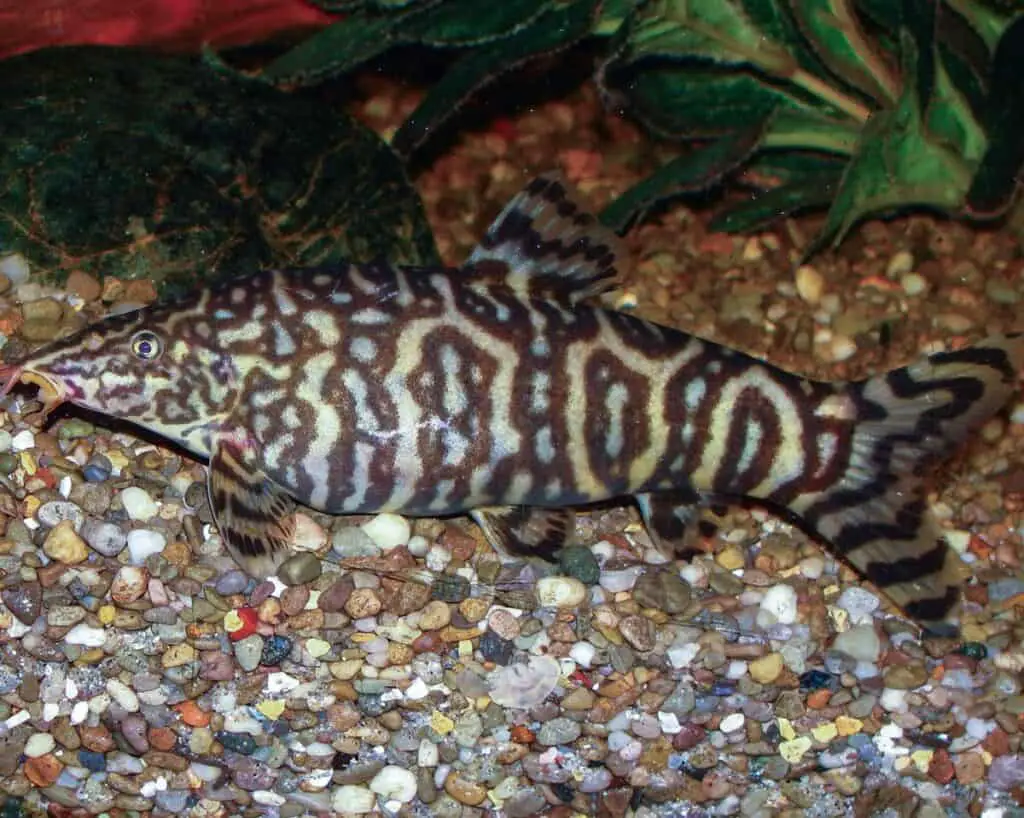
Conservation and Environmental Impact
The Yoyo Loach is currently listed as Least Concern (LC) on the IUCN Red List. However, habitat destruction and overfishing for the ornamental trade pose potential threats to wild populations. As an aquarium hobbyist, it’s essential to support sustainable practices within the trade.
Buy fish from reputable sources that practice responsible breeding and do not contribute to the overexploitation of wild populations. Additionally, never release aquarium fish into local waterways, as they can disrupt native ecosystems and introduce diseases.
By supporting conservation efforts and making environmentally responsible choices, aquarium enthusiasts can help ensure the continued survival of the Yoyo Loach and other fish species in the wild.
Breeding and Reproduction
Breeding Yoyo Loaches in a home aquarium is rare, and in the wild, females lay eggs on the substrate during the rainy season without parental care. Commercial breeding involves hormone injections and takes place in Florida and other locations in the United States. In an aquarium, parents should be conditioned with vegetable food, and the breeding tank should have specific water parameters. Eggs hatch in 16-18 hours, and the fry should be fed baby brine shrimp or other commercially available fry foods until they grow large enough to accept powdered flake food.
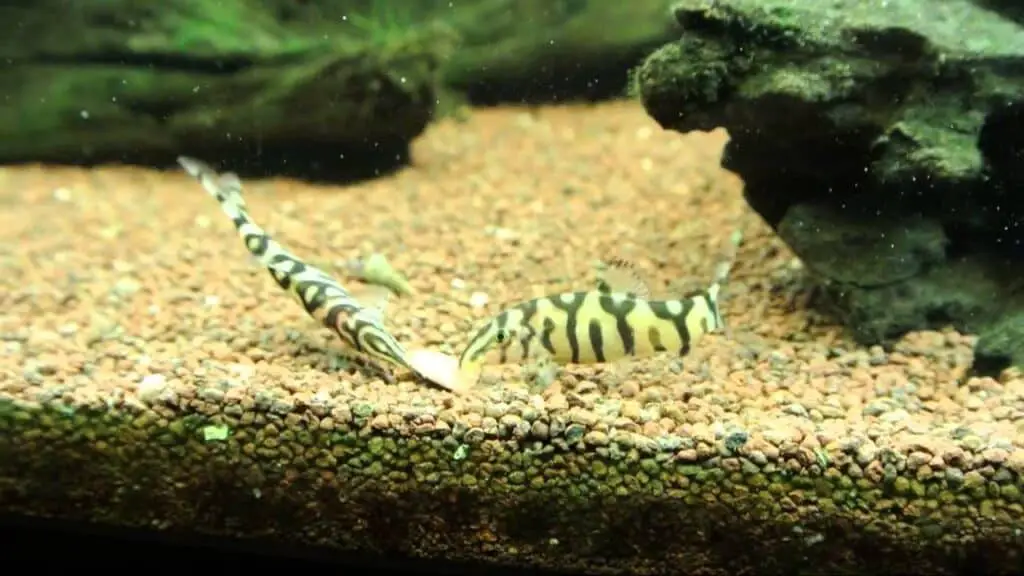
Sexing Yoyo Loaches
It is difficult to differentiate between male and female Yoyo Loaches. Mature females are usually fuller-bodied than males, who exhibit more reddish pigment around their mouth and barbells. Females may have three irregular Y-shaped bands on their body, while the heads of males are reticulated gray. The snout of the female is generally longer than males.
Conclusion
The Yoyo Loach is a cute, energetic, and hardy fish that makes a great addition to many freshwater aquariums. They are generally peaceful and robust, making them compatible with a variety of tank mates. Yoyo Loaches are usually available at pet stores and online at moderate prices. With proper care, including a well-maintained tank, a balanced diet, and suitable tank mates, Yoyo Loaches can thrive in captivity and live up to 20 years or more. These fascinating fish are sure to bring enjoyment to both novice and experienced aquarium enthusiasts alike.
For more detailed information on loaches, we recommended this book:
- Martin, James (Author)
- English (Publication Language)
- 150 Pages - 06/02/2014 (Publication Date) - Lene Larsen (Publisher)
FAQs and Tips for Yoyo Loach Care
How often should I feed my Yoyo Loach?
Feed your Yoyo Loach 2-3 times a day, providing enough food that they can consume within a few minutes. Overfeeding can lead to poor water quality and health issues.
Can Yoyo Loaches live with other fish?
Yes, Yoyo Loaches can coexist with a variety of peaceful, open water-dwelling tank mates such as barbs, rasboras, danios, gouramis, rainbowfish, and other loach species. However, avoid long-finned fish as Yoyo Loaches may nip their fins.
How can I encourage my Yoyo Loaches to be more active and visible?
Yoyo Loaches are more likely to be active and visible when they feel secure in their environment. Provide plenty of hiding spots, maintain a stable water temperature, and keep them in a group of 6 or more. Dimming the aquarium lights can also encourage them to explore more.
How do I know if my Yoyo Loach is male or female?
It can be challenging to differentiate between male and female Yoyo Loaches. Mature females are usually fuller-bodied, while males may have more reddish pigment around their mouths and barbels. Female snouts are generally longer, and males’ heads may have reticulated gray patterns.
How can I maintain good water quality for my Yoyo Loach?
Ensure proper filtration and water movement, test water parameters regularly, and perform weekly partial water changes (25-30%). Also, avoid overfeeding and promptly remove uneaten food or debris.
Can I breed Yoyo Loaches in a home aquarium?
Breeding Yoyo Loaches in a home aquarium is challenging and rarely occurs. In the wild, they spawn during the rainy season, and commercial breeders often use hormone injections to induce spawning. If you’re interested in breeding Yoyo Loaches, provide a separate breeding tank with ideal water conditions and a high-quality diet.
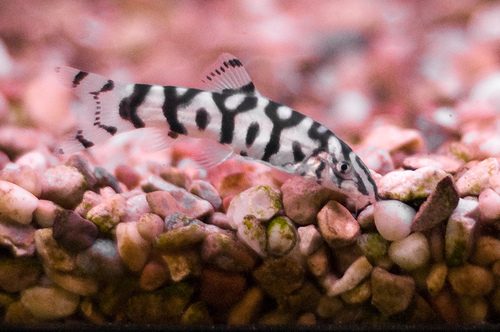
Stats
Scientific Name: Botia almorhae
Common Name: Yoyo Loach, Almorha Loach, Pakistani Loach, Reticulated loach
Origin: India, Nepal, Bangladesh
Adult Size: 15.49 cm
Behavior: Peaceful
Tank Level: Bottom
Minimum Tank Size: 20 gallons
Diet: Omnivore
Breeding: Egg layer
Care level: Easy
Water pH: 6.5-7.5
Water Hardness: 3 – 10 dGH
Water Temperature: 75 to 820 F
Water Movement: Weak
Lighting: Moderate – normal lighting
Lifespan: up to 20 years with proper care


